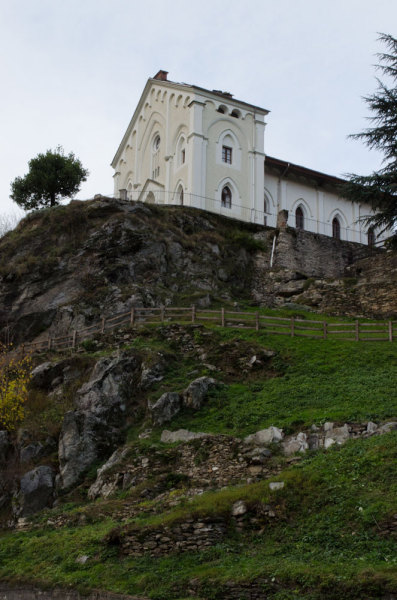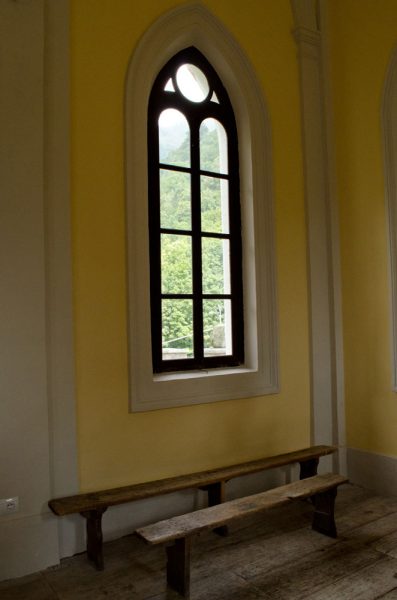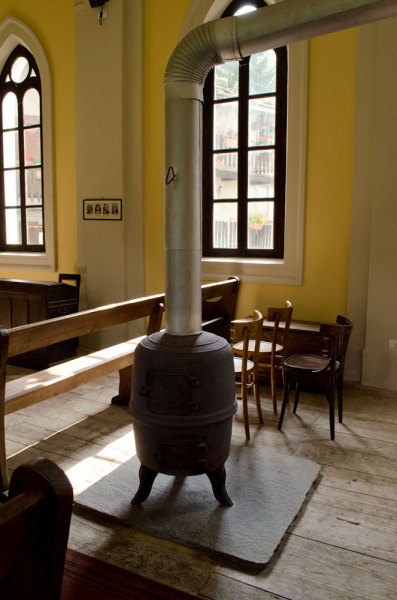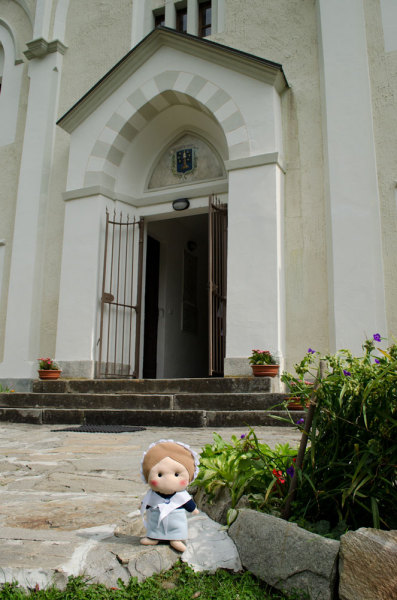Hi guys!
Today we are back in Angrogna Valley, more precisely in Pradeltorno, an important site of Waldensian history.
I’m gonna tell you the history of its temple, which was built in 1876, and which is located on the rock that gives its name to the village, overlooking the town from above. …actually, have you ever wondered about the curious name of this place?

Some say that “Pradeltorno”, (also known as Prè dar Tourn), could mean “the meadow of the hairpin turn, of the route, of the return” or “the field of a Tourn” (which is a typical surname from Waldensian Valleys). Many English travelers who passed through here in the 19th century, however, wrote in their journals “Pra del Tor”, and this confirms the hypothesis of the term “tor” as “rock”.
Once here, we can try to imagine a large meadow dominated by a huge rock and, not too far, the village … Well, It is not very different from what we see today!

Talking about British travelers in the valleys… in 1871, the Anglican reverend (and traveler) John Napper Worsfold was surprised that, in such a stronghold of resistance to persecution as Pradeltorno, there was not a Waldensian church. The Coulege dei Barba had been no longer used for a long time, because shepherds – after the Chanforan edict of 1532 – had begun to study in the Protestant French Academies.
In the small village there was just a little chapel dedicated to Virgin Mary, but the nearest Waldensian temple was a few hours’ walk away from. Even the “Beckwith school” was falling into pieces… that’s why Worsfold decided to intervene.

The Reverend was sustained, as well, by the Waldensian minister Etienne Bonnet, who wrote, in 1875, a newspaper article in which he claimed not only that the school had to be restored and that a temple should be built in memory of Waldensian heroes fallen there, but he also remembered that inhabitants from pastures at high altitudes needed an accessible House of Cult.
In 1873 Worsfold wrote and published in England a book called The Vaudois of Piedmont: in this book he recounted his journey in the Waldensian Valleys. With his book he contributed to raising funds for the project. 53 families from Pradeltorno also contributed, and they all eventually raised all of the needed money: the temple could be built!
The first stone was laid in the summer of 1876 and the building was inaugurated on September 3rd, 1877. Inside the temple there are some rooms to host the school and to work as an accommodation for the teacher.

The temple was built in an almost Gothic style, which was an unusual choice in Waldensian Valleys, but it was very appreciated by British visitors. You have to know that, usually, architecture of Waldensian temples is very simple, with very few decorations and no frills. Through the years, just one big change was made: at the beginning the front of the building was painted in yellow and red, but maybe these colors were a bit too bright for shepherds and peasants from Angrogna Valley… that’s why the temple was later repainted in white and gray!
How to get here
Reach Pradeltorno (district of Angrogna) coming from Torre Pellice and, once you leave the Provincial Street 161 entering the town, take Generale Martinat Street right before the bridge on Angrogna creek.
Go through the whole street and you’ll reach the hamlet known as Chiot dl’Aiga, then take the road on your left (Pradeltorno Street) that takes to the valley bottom.
Once in Pradeltorno, park your car and walk along the street between the cemetery and you get the Waldensian temple.
Do you want to read the tale in Italian ?